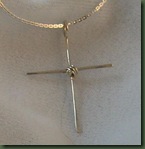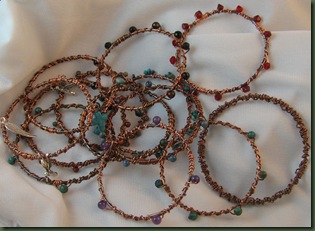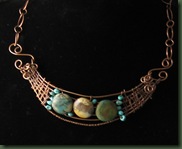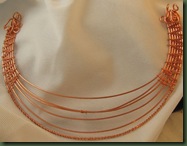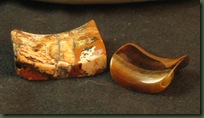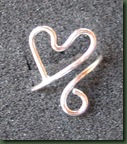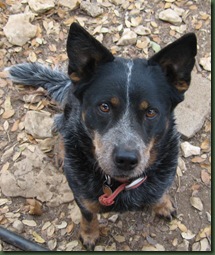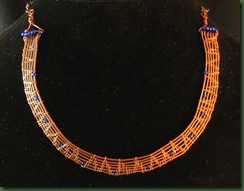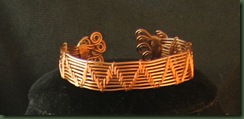It’s that time of the year when many people begin to gear up for the holidays. For designers, that often means art/craft show after show after show. We speculate by buying materials and creating our products and then hope that we’ve designed things that people will want. It often seems like design roulette. The time and monetary investment in the products can weigh us down, but could it also make us cross?
I hope the season is remaining pleasant for you as it is for me. This year, instead of being cross, I chose to make a cross. One cross led to another and I am beginning to think I should just start a cross store. See what you think. Below are just a very few of those I’ve made.
The plain wire crosses are the easiest to make being composed of two pieces of 14 gauge wire soldered and then wire wrapped in the middle. These are then patinated and textured to provide the look of wood.
The flower-like wire crosses are a little more challenging. I eyeball the shape and occasionally create one that’s not as symmetrical as I would like. Yes, I know that I could use a jig and make them perfect, but that wouldn’t be me. Although you can’t see it very well in this photo the fold formed leaf at the top shares a jump ring with one of this style crosses.
The embellished cross required some problem solving before hatching. I saw a pendant in a magazine that was made by attaching beads to a filigree with wire. I tried this and liked the look except for the back shown below.
 This was one big mess! As I pondered how to cover the mess, I, of course, thought about making it into a cross. First I soldered a wire cross onto a sheet metal disc.
This was one big mess! As I pondered how to cover the mess, I, of course, thought about making it into a cross. First I soldered a wire cross onto a sheet metal disc.
Rather than overlapping the wires for the cross, I cut the side pieces and placed them beside the vertical wire. This made the cross a bit flatter. Finally, I wired the decorative filigree to the wire of the cross and finished the piece.
I made a smaller cross, not pictured, by whittling down the filigree piece. This removed the lovely outer curves and I didn’t like it as well.
Finally, I created a scroll type cross using double wires rather than single.
Customers at my last show seemed to enjoy selecting a cross and then choosing either chain or leather to go with it. They also had a choice of selecting a sterling silver cross. I’ve made these in various sizes.
Now it seems that every time I contemplate a new design, I can see the product made as a cross. Yet, I guess this is better than being CROSS! (I think I just heard a loud “Amen” from the other room.)




